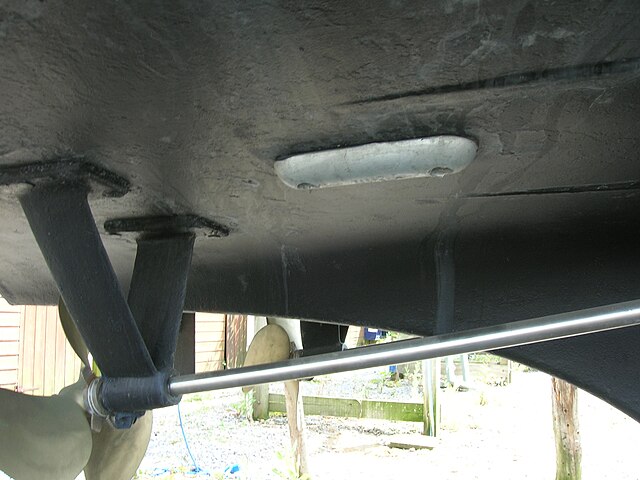A galvanic anode, or sacrificial anode, is the main component of a galvanic cathodic protection system used to protect buried or submerged metal structures from corrosion.
Detailed view of a galvanic anode on the hull of a ship
The bright rectangular objects on these ship components are galvanic anodes.
A steel wide-beam canal barge, showing a newly blacked hull and new magnesium anodes.
Galvanic anode on a submarine. It is the light stripe on the casing near the tailplanes.
Cathodic protection is a technique used to control the corrosion of a metal surface by making it the cathode of an electrochemical cell. A simple method of protection connects the metal to be protected to a more easily corroded "sacrificial metal" to act as the anode. The sacrificial metal then corrodes instead of the protected metal. For structures such as long pipelines, where passive galvanic cathodic protection is not adequate, an external DC electrical power source is used to provide sufficient current.
Aluminum sacrificial anodes (light colored rectangular bars) mounted on a steel jacket structure.
Zinc sacrificial anode (rounded object) screwed to the underside of the hull of a small boat.
Galvanic sacrificial anode attached to the hull of a ship, showing corrosion.
An air cooled cathodic protection rectifier connected to a pipeline.







